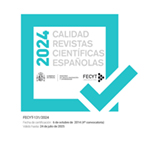Popular Hymnody and Lived Catholicism in Hungary in the 1970s–1980s
Abstract
In this article, I look at how popular hymnody and the surrounding devotional and liturgical practices changed after the Second Vatican Council in Hungary. The songs amongst authoritarian, atheistic circumstances sounded astonishingly similar to the emerging “folk mass movement”. The discourse analysis of Hungarian popular hymnody contributes to a new perspective of Eastern European Catholicism and helps us understand how “lived Catholicism” reflects the post-Vatican spirit. Post-Vatican popular hymnody, a catalyst for a new style of devotional practices, is understood as “performed theology” behind the Iron Curtain expressing relationality, as it actualizes and manifests spiritual, eschatological, and ecclesial relationships.
Downloads
Article download
License
In order to support the global exchange of knowledge, the journal Cuadernos de Historia Contemporánea is allowing unrestricted access to its content as from its publication in this electronic edition, and as such it is an open-access journal. The originals published in this journal are the property of the Complutense University of Madrid and any reproduction thereof in full or in part must cite the source. All content is distributed under a Creative Commons Attribution 4.0 use and distribution licence (CC BY 4.0). This circumstance must be expressly stated in these terms where necessary. You can view the summary and the complete legal text of the licence.











